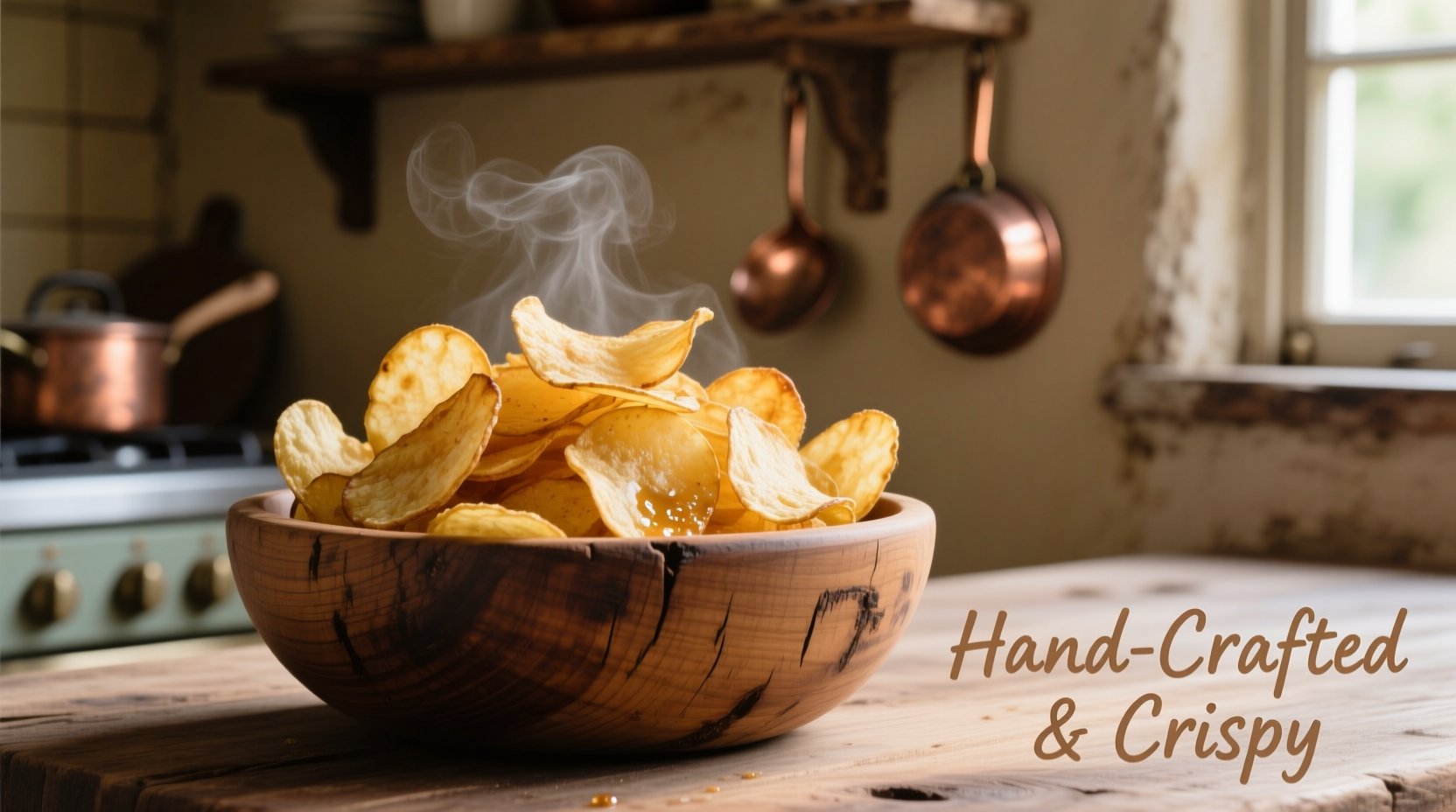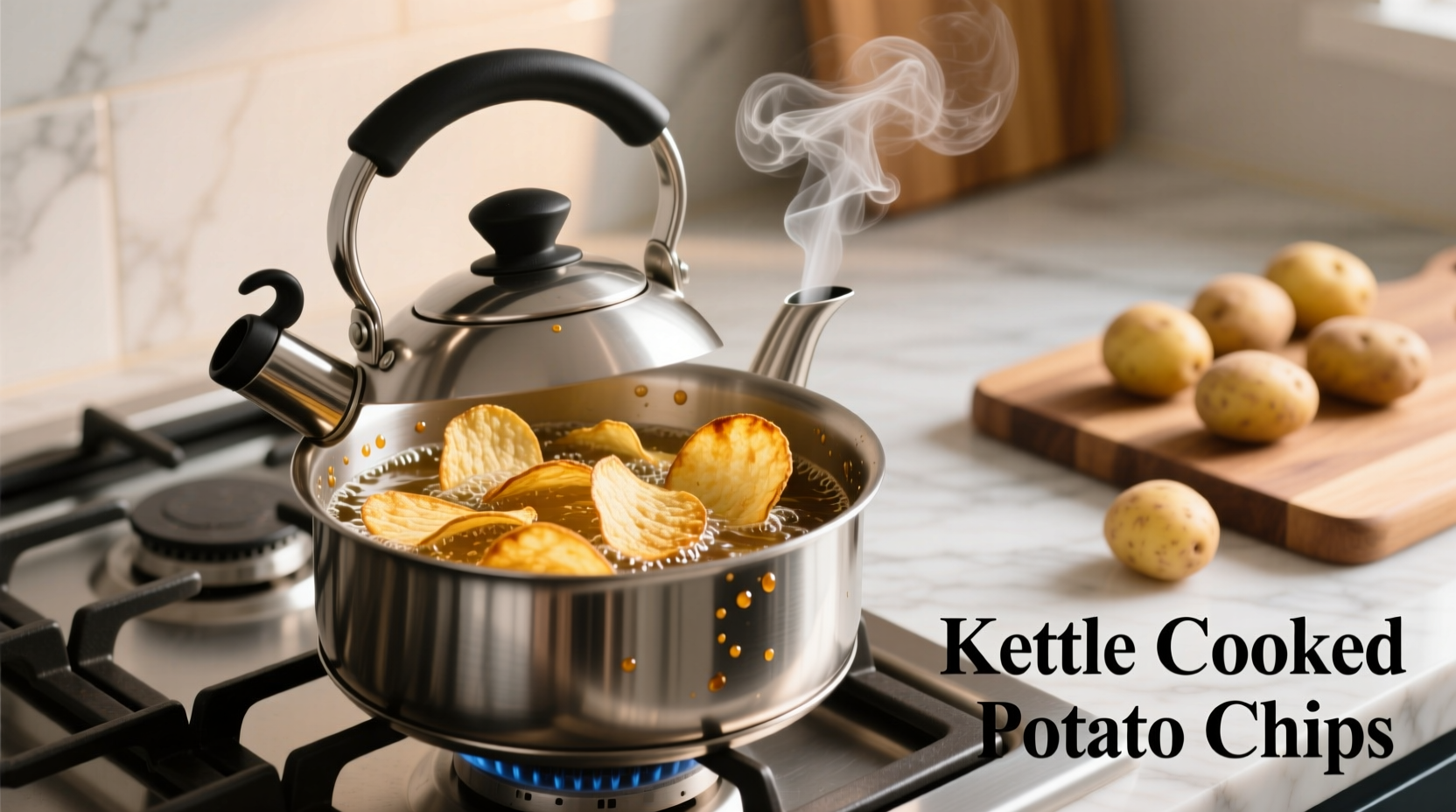Ever wonder why some potato chips deliver that intensely satisfying crunch and robust potato flavor while others feel lighter and more uniform? The answer lies in the cooking method. Kettle cooked potato chips represent a time-honored approach to chip making that creates a distinctly different eating experience from standard continuous-fried varieties.
Understanding the Fundamental Difference in Production
The key distinction between kettle cooked and regular potato chips comes down to the frying process. While both start with sliced potatoes and oil, the methodology diverges significantly:
- Kettle cooked chips are made using a batch process where potatoes fry in deep kettles with a fixed amount of oil
- Regular chips use a continuous frying system where potatoes move through a constant flow of oil
This seemingly small difference in technique creates dramatic variations in texture, flavor, and overall eating experience. The batch method requires more attention and time but delivers that signature hearty crunch snack lovers seek.
The Kettle Cooking Process Explained
Traditional kettle cooking follows these essential steps:
- Potatoes are washed, peeled (sometimes), and sliced to consistent thickness
- Slices undergo a water bath to remove excess starch
- Chips are loaded into baskets and lowered into preheated oil in deep kettles
- They cook in batches at lower temperatures (typically 325-350°F) for longer periods
- As cooking progresses, oil temperature drops and must be carefully monitored
- Finished batches are removed, drained, and immediately seasoned
This method creates what food scientists call the "oil temperature curve" phenomenon. As potatoes enter the oil, the temperature drops significantly, then gradually recovers during cooking. This variable temperature profile contributes to the distinctive texture development.
| Characteristic | Kettle Cooked Chips | Regular Chips |
|---|---|---|
| Frying Method | Batch process in deep kettles | Continuous conveyor system |
| Cooking Temperature | 325-350°F (variable) | 350-375°F (consistent) |
| Cooking Time | 4-7 minutes per batch | 2-4 minutes continuously |
| Texture Profile | Thicker, more irregular, substantial crunch | Thinner, uniform, lighter crispness |
| Flavor Intensity | More pronounced potato flavor | Milder potato taste |
| Oil Absorption | 15-18% (USDA FoodData Central) | 30-35% (Journal of Food Science) |
Why Texture and Flavor Differ Significantly
The variable temperature during kettle cooking creates a more complex texture development. As the oil temperature drops when cold potatoes enter, the initial cooking phase is gentler, allowing moisture to escape gradually. When the temperature recovers later in the process, the exterior crisps more thoroughly.
According to research published in the Journal of Food Engineering, this temperature fluctuation creates a more heterogeneous structure with thicker cell walls and larger air pockets. The result? That distinctive hearty crunch that doesn't shatter immediately but provides sustained texture throughout eating.
Food historians note that kettle cooking represents the original method for making potato chips, dating back to the 1853 creation at Moon's Lake House in Saratoga Springs. The modern continuous process wasn't developed until the 1920s as manufacturers sought more efficient production methods.
Nutritional Considerations: Oil Absorption Differences
Contrary to popular belief, kettle cooked chips often contain less oil than regular chips despite their heartier texture. The USDA FoodData Central database shows that traditional kettle cooked varieties typically absorb 15-18% oil by weight, while continuous-fried chips absorb 30-35%.
This counterintuitive finding comes from the cooking chemistry: the lower initial temperature in kettle cooking allows moisture to escape more gradually, creating a barrier that limits oil penetration. The continuous process's higher, consistent temperature causes more rapid moisture loss and greater oil absorption.
However, kettle chips are often thicker and denser, meaning a single chip may contain more total calories than a thinner regular chip. Portion awareness remains important regardless of cooking method.
When to Choose Kettle Cooked Chips
Kettle cooked potato chips excel in specific situations where their robust texture and flavor shine:
- Dipping applications - Their sturdier structure holds up better with thick dips
- Flavor pairing - The stronger potato base complements bold seasonings
- Cheese pairings - Works well with aged cheeses that need a substantial base
- Cocktail occasions - Provides satisfying crunch that stands up to drinks
Regular chips remain preferable when you want a lighter, more delicate crunch or when serving with very thin dips that might slide off sturdier chips.
Identifying Authentic Kettle Cooked Products
Not all chips labeled "kettle cooked" follow traditional methods. Look for these indicators of authentic kettle cooking:
- Visible variation in chip thickness and shape
- Deeper golden brown color (not uniformly light)
- Substantial weight and density
- Noticeable potato flavor beyond just salt
- Ingredients listing that doesn't include preservatives common in mass-produced varieties
The Specialty Food Association notes that authentic kettle cooked chips typically have shorter ingredient lists and lack the anti-caking agents often found in regular chips designed for extended shelf stability.
Bringing Kettle Cooking Home
While commercial production uses specialized equipment, you can approximate kettle cooking at home:
- Use a deep, heavy-bottomed pot (Dutch oven works well)
- Fill with high smoke-point oil (peanut or avocado) to depth of 3 inches
- Heat to 325°F before adding potatoes
- Fry in small batches (don't overcrowd)
- Maintain temperature between 300-325°F throughout cooking
- Cook until golden brown (4-6 minutes)
- Drain thoroughly on wire racks, not paper towels
- Season immediately while still hot
Home cooks should note that true kettle cooking requires careful temperature monitoring. The National Center for Home Food Preservation recommends using a reliable thermometer and never leaving hot oil unattended.

Final Considerations for Chip Enthusiasts
Understanding the kettle cooking process helps you make informed choices based on your snack preferences. The thicker, crunchier texture and more pronounced potato flavor of kettle cooked chips come from a time-intensive batch process that creates a distinctive eating experience.
Whether you prefer the hearty satisfaction of kettle cooked varieties or the lighter crispness of regular chips depends on your current craving and intended use. Both methods produce delicious results when executed properly, but they serve different culinary purposes in the snack landscape.











 浙公网安备
33010002000092号
浙公网安备
33010002000092号 浙B2-20120091-4
浙B2-20120091-4